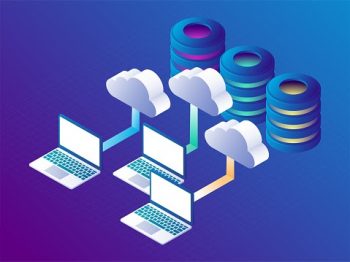
Reality Check: There is No ‘Cloud’
Ten years ago, the “cloud” was still a novel idea for many. A good number of folks didn’t trust the idea. But the many excellent services out there won most of us over with huge amounts of free or affordable storage, easy accessibility, great security features, and more. Today, most web users take advantage of cloud storage as a file sharing app, a way of keeping your laptop from being overwhelmed, etc. – Most of us like and trust the cloud.
Data cloud storage centers are, for the most part, highly secure facilities with top-of-the-line security measures in place: they think and plan for all possibilities. Your family photos, for example, are backed up multiple times by providers… as they obviously have a very strong vested interest in not losing your data. There are also systems in place to re-route data and, as noted, with any decent cloud service, data is almost always stored in more than one site. Cloud providers rehearse for disasters and have a very good record – almost perfect, in fact. But “acts of God” do still happen. If the unimaginable were to happens, however, you’d want to be one of the cloud-service clients who considered options and prepared by having a “disaster plan.”
We’ve gotten so used to cloud storage platforms that perhaps it’s somewhat understandable that some have forgotten the physicality of the concept. The cloud “works” and is generally very dependable. Using a cloud service gives you access to your files anywhere; but of course, there is no magical “cloud” where all is safely preserved in perpetuity. Clouds are other people’s computers. And computers, no matter how advanced they are, are not immune to nature. The most recent case in point? – In the early hours of March 10, 2021, parts of the largest Europe-based cloud provider – OVHcloud in Strasbourg, eastern France – went up in flames. One of the provider’s data centers was destroyed and another near the blaze suffered smoke damage.
Those without a plan for trouble ended up metaphorically burned. Those least affected by the conflagration in March were those who were wise enough to pay for off-site backup services. Writing on Twitter the day of the fire, OVH’s Octave Klaba said, “We have a major incident … We recommend to activate your Disaster Recovery Plan.” But apparently, some European users didn’t have a disaster recovery plan. A reported 3.5 million websites were knocked offline due to the incident and some French banks, as well as some government sites, were offline for as long as 15 hours following the literal meltdown.
Fans of the survival video game, Rust, from Facepunch Studios, were very disappointed to discover that Facepunch evidentially did not have proper backup/disaster recovery plans in place: the game company confirmed that – even after getting back online – no data could be restored. The blaze this March in Strasbourg should be instructive: The benefits of cloud computing are massive, but putting all your trust in a third party – and their infrastructure – comes with risks… however small. Having a strong disaster recovery plan — including data backups — is vitally important.
For a person who wants to preserve family pictures, in addition to a subscription for a cloud service, perhaps something as simple and cheap as a couple of external hard drives could be enough of a fail-safe. For larger organizations that stand to lose a lot in the event of the unthinkable, there are options for “triple redundant” secure storage. But you’ll have to be willing to pay for it. The prices offered by various companies vary, so seek out the best option for your budget. Overall, however, it’s some people’s mindset that might require the biggest overhaul: it’s amazing what we get from cloud storage and how safe and secure it generally is, but to use an analogy: smart homeowners still buy insurance, even though they might not live in a region prone to disasters. In the digital age, data can literally be more precious than gold. We need to start treating our digitalized lives with a little more caution – as, to use photos as an example, sometimes the only versions in existence are digital ones.
Experts have long touted the need for back-ups of back-ups. One simple way to remember what’s required is called the “3-2-1 Backup Rule.” The rule says you should have at least three versions of your data on two different storage platforms and that one of them must be off-site. Clearly, the “3-2-1” rule, if applied to public cloud-stored data, might have saved a few companies in March. The Strasbourg fire was a reality check – and should help motivate both casual users and big business to think about how well they’re backed up.

